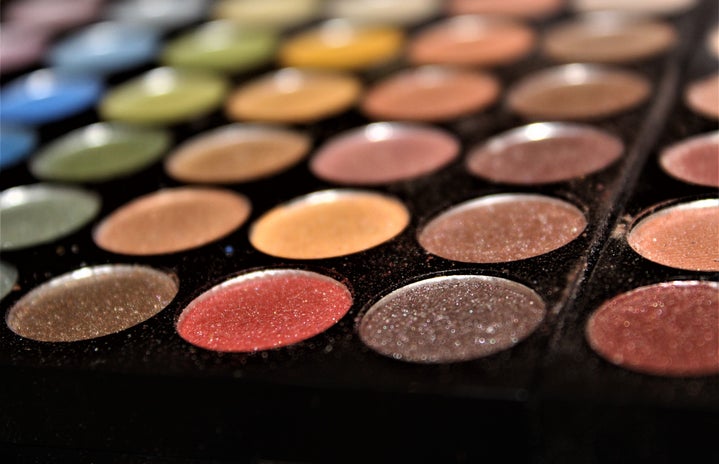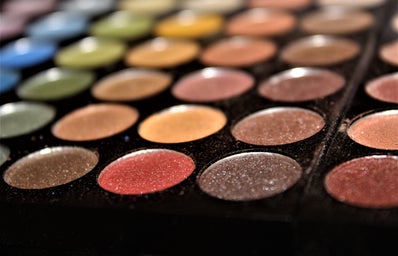What’s your morning routine?
Personally, I certainly don’t have a “Hey guys, welcome back to my channel!” type of morning, but it usually involves some basic skincare and grooming. But today, let’s break down the steps of your routine and focus on what products you’re using.
Firstly, a quick bio review on skin — your body’s largest organ. Skin lives, breathes, and can absorb products into your bloodstream. Some say in less than 30 seconds, others say longer, but it really depends on what you’re using and where you’re using it. Your face and neck have much thinner skin, which is more easily penetrated than elsewhere. So that moisturizer you use every day and night: what’s in it? Because whatever is, those ingredients will be in your bloodstream within a few minutes of application. That sounds intense, right? This means all the cheap ingredients and chemicals with abnormal pHs sink into your skin from your lotions and lipsticks. And I’m not just talking about vanity — well, I actually sort of am — because the beauty industry in America sold $18.8 billion worth of product last year, and the numbers are on the rise going forward (to a $532 billion industry in general!) Every morning, millions of people wake up and apply moisturizers, foundations, and more on their delicate skin, feeding their bloodstream a brew of toxins. And these chemicals can either synergistically combine together into something unknown or slowly accumulate in your body over time.
Once I heard about this, I began to stare down just about every product in my bathroom, wondering if they were really any different than the cleaning supplies in the cabinet below my kitchen sink. And when I began to read the ingredients list — just like they say with food — I could barely pronounce a word because of the never-ending scientific chemical list just on the back of my toothpaste. So naturally, I spent a decent chunk of time Googling every ingredient in my Crest Pro-Health toothpaste, wondering why I haven’t done this before.
But wait! Before you rush towards your own bathroom cabinet and investigate your product ingredients, save yourself some time and check out the Environmental Working Group’s special site “Skin-Deep Cosmetics Database.” Here, you can search for most any health or beauty product you have, and a corresponding number will indicate the product’s harm hazard. This amazing site will list every ingredient and its specific potential threats to your health along with its general score. It’s shocking, concerning, and a little easy to get carried away with checking just about everything you use on a daily basis.
Yet with all the current, hazardously high numbers for a stick of Old Spice, the beauty industry actually had humble beginnings. Dating back as far as B.C., the ancient Greeks used honest ingredients like milk, honey, herbs, and olive oil on their skin while ancient Egyptians used clays, metals, and ashes to make lipsticks and eye kohl (think eyeliner). So how did these natural, earth-derived beauty secrets not travel so well into 2019 where a simple hairspray has an EWG rating of 10 (1-10 scale, 10 being the worst)?
Through mass marketing all over the world, the phrase “buy low, sell high” has permeated the beauty industry. What company would spend more money on fresh ingredients when they could use cheap chemicals for so much less? Well, that was the frame of mind during the rise of cosmetics. Cheap ingredients plus synthetic preservatives like methylparaben and propylparaben kept those not-so-fresh cosmetics appearing pretty darn new, and nobody blinked an eye for years until the recent green beauty revolution.
Since my personal mini-revelation from a tube of Crest toothpaste, I’ve become much more conscious of what I use everyday and have discovered new products and brands sans those toxic ingredients. And (bonus!) I’ve found that many of these companies with clean beauty initiatives are also very eco-conscious and sustainable. Some of these companies are unfortunately more expensive for their higher grade of ingredients and ethical sourcing/manufacturing. However, with the green beauty market growing wider and wider each year, many low-cost brands are producing safer items and cleaning up their ingredient list. In the meantime, here are some things to look for in the meantime:
-
Non-aluminum deodorant
-
Perfume oil
-
Mineral-based makeup
-
No parabens or sulfates
-
No oxybenzone for sunscreens
Now whenever I spray perfume on my neck, my skin starts itching. If I use my old favorite L’Oreal concealer, my eyes sting (EWG rating of 6!). And I’m pretty confident my irritation is because my body has adjusted to what I now use, which is much more mild and natural.
But today, the market to “green beauty” business has indeed capitalized on the growing fad, either falsely marking their products as safe, or simply marking up the price to an absurd amount. Chain beauty stores like Sephora now have a “Clean by Sephora” stamp on all products that avoid a certain list of chemicals. This is great and all, if you want to spend $30 on shampoo or $40 on foundation, but if you want mid-priced drugstore products, here are a few alternatives that are completely EWG certified safe (score of 0!):
-
Shampoo: Herbal Essences Bio: Renew Birch Bark Extract Shampoo (Side note: this may be the best-smelling shampoo ever.)
-
Conditioner: Herbal Essences Bio: Renew Birch Bark Extract Conditioner
-
Soap: Everyone Unscented Soap
-
Makeup remover wipes: Everyone Cleansing 3-in-1 Face Wipes
Although I’ll agree, dumping all old products out to replace them with even more expensive, not-so-effective alternatives doesn’t exactly sound like a great trade. But they don’t all have to be expensive, and many of them work just as well as what you’re already using; it may just take some time to find the best products for yourself. And it’s easy to get carried away with “mass-ecofying” your care routine. Not every ingredient in what I use is perfect, food-grade bliss, but I consider it an honest attempt to avoid what I can.
So nothing’s perfect here (what else is new), but I think updating my view on skin — a living, breathing organ that absorbs whatever we put on it — was a pretty novel discovery on my part, changing the way I view the cosmetics industry, beauty norms, and health in general. And while I’m still no expert, I’m eager to see how society continues to modify its outlook on the purpose of beauty products.


